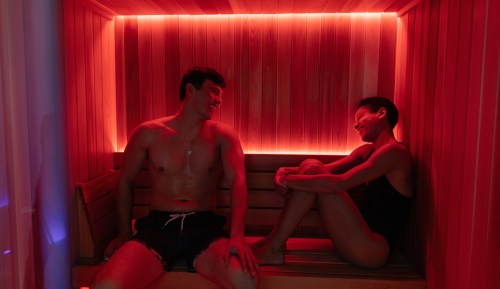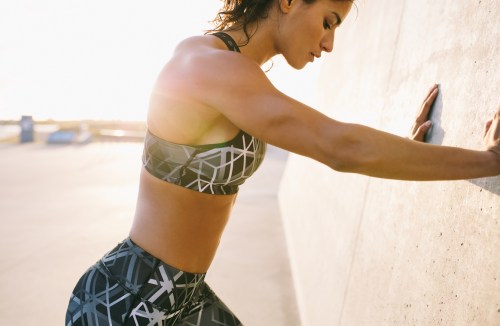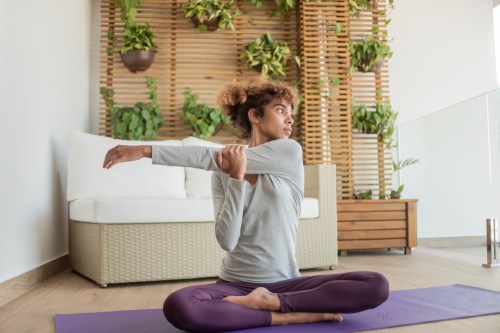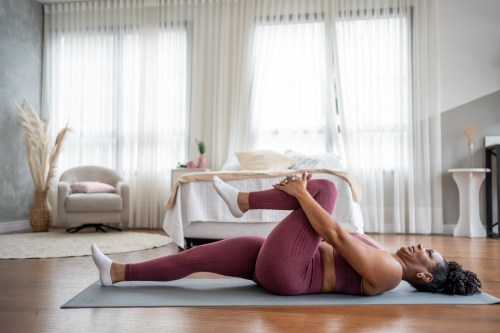‘I’m a Ballet Teacher, and This Is How To Correct 3 Common Posture Mistakes’
Learn how to correct posture mistakes from a ballet teacher by tackling three of the most common errors. Stand tall in no time.

Ballet dancers have achieved a new level of good posture. It’s not just something they think about during classes or performances—it’s a way of life. Just ask Lisa McCabe, ballet teacher and the founder of Lovely Leaps dance studio in San Marcos, California. “Good posture is something a dancer thinks about and is working on all the time—it’s always on our minds,” she says. “We think about posture when we’re eating, drinking, talking, walking, shopping, working out, and every moment in between.”
Experts in This Article
Lisa McCabe is a ballet instructor and the founder of Lovely Leaps dance studio.
McCabe, who’s been dancing since she was 9 years old, studied dance at Concordia University in Montreal before pursuing a career as an engineer. But it wasn’t long before she got back to her true passion and opened up a studio in order to share her love of dance with the younger generation. And correct posture is always an essential part of the training for young dancers. “Good posture is so important in ballet,” she says. “Without proper posture in dance, the risk of a serious injury becomes far greater.”
“Good posture is something a dancer thinks about and is working on all the time—it’s always on our minds. We think about posture when we’re eating, drinking, talking, walking, shopping, working out, and anything in between.” —Lisa McCabe, ballet teacher
McCabe focuses on a few distinct areas to help her dancers learn how to improve posture and correct common mistakes. “While these tactics are used by ballerinas everywhere, you can use them, too,” she says. “Posture isn’t only important for ballerinas—it’s important for any human. Good posture boosts self-confidence, enhances energy levels, and reduces pain.”
How to correct posture mistakes, according to a ballerina
1. For better posture overall: planks
“Start your day with a 20-second plank,” says McCabe. “This will engage your core, getting it warmed up for a day of good posture. The plank strengthens your spine, your rhomboids and trapezius, and your abdominal muscles, which naturally result in a strong posture as they grow in strength.”
How to do a plank:
- 1.Place your forearms on the floor with your elbows aligned below your shoulders and arms parallel to your body at about shoulder width apart. If flat palms bother your wrists, clasp your hands together.
- 2.Ground your toes into the floor and squeeze your glutes to stabilize your body. Your legs should be working, too—be careful not to lock or hyperextend your knees.
- 3.Neutralize your neck and spine by looking at a spot on the floor about a foot beyond your hands. Your head should be in line with your back.
- 4.Hold the position for 20 seconds. As you get more comfortable with the move, hold your plank for as long as possible without compromising your form or breath.
Here’s how to do a high plank the right way:
2. For hunching over: Sitting tall exercise
“This is the best way ballerinas keep their posture while sitting on the floor or on a bench as they’re waiting for their turn to dance. This exercise is great for when you’re scrolling on your phone or sitting at the computer,” says McCabe.
How to do the sitting tall exercise:
- 1.Sit on a chair and keep your eyes level with what’s directly in front of you.
- 2.Keep your shoulders low and relaxed. Imagine there’s a pencil between your shoulder blades that you’re trying to hold.
- 3.Engage your abs. Envision your muscles tightening right before an object might hit you in the stomach.
3. For slouching: Standing exercise
“Standing tall not only helps your posture, but makes you look like the most confident person in the room,” says McCabe. “This is a great exercise to do anytime you’re standing.”
How to do the standing exercise:
- 1.Stand with your feet six inches apart and your body weight directly in the center. Refrain from pushing your body weight to one side.
- 2.Engage your abs, lower your shoulders (keeping them nice and relaxed), and lengthen your neck. Pretend like you’re trying to touch the ceiling with the top of your head.
A strong core improves overall posture:
Oh hi! You look like someone who loves free workouts, discounts for cult-fave wellness brands, and exclusive Well+Good content. Sign up for Well+, our online community of wellness insiders, and unlock your rewards instantly.
Sign Up for Our Daily Newsletter
Get all the latest in wellness, trends, food, fitness, beauty, and more delivered right to your inbox.
Got it, you've been added to our email list.










